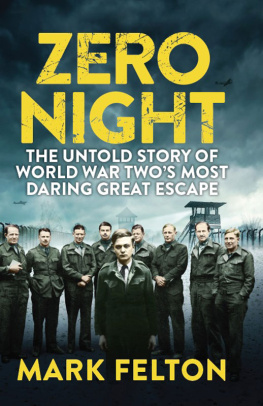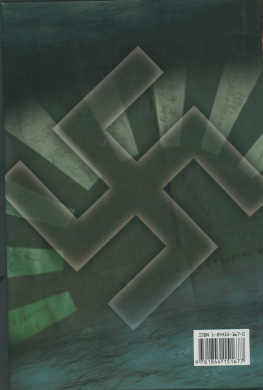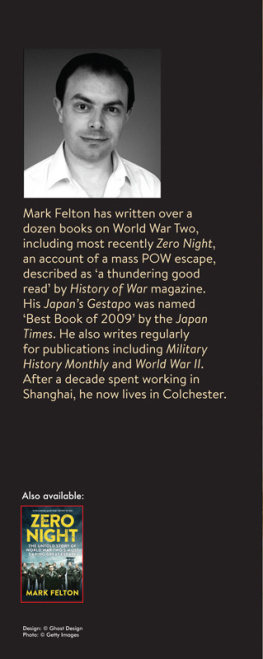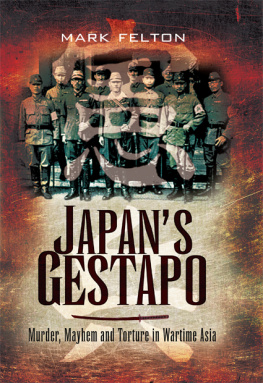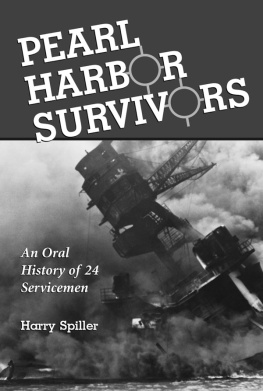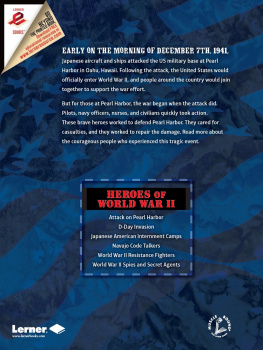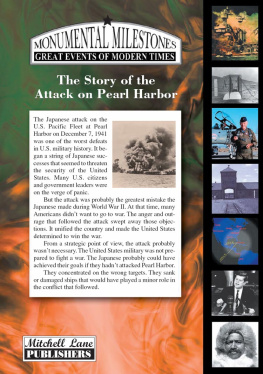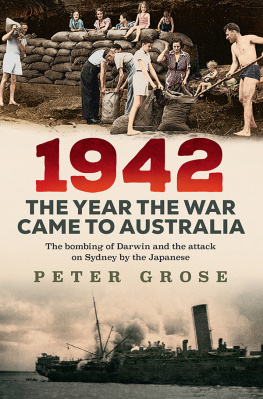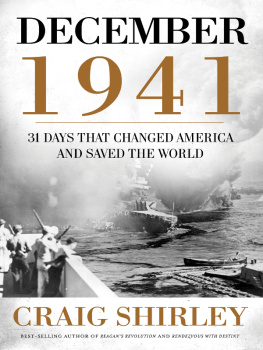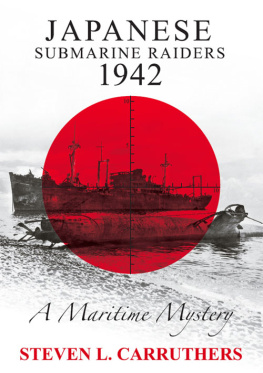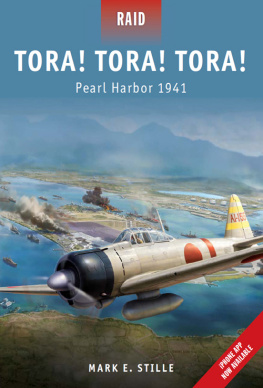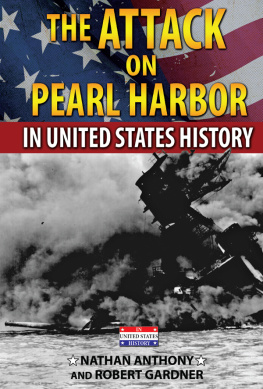First published in Great Britain in 2006 by
Pen & Sword Military
an imprint of
Pen & Sword Books Ltd
47 Church Street
Barnsley
South Yorkshire
S70 2AS
Copyright Mark Felton, 2006
ISBN 1 844 154 807
The right of Mark Felton to be identified as Author of this Work has
been asserted by him in accordance with the Copyright, Designs and
Patents Act 1988.
A CIP catalogue record for this book is
available from the British Library
All rights reserved. No part of this book may be reproduced or transmitted
in any form or by any means, electronic or mechanical
including photocopying, recording or by any information storage and
retrieval system, without permission from the Publisher in writing.
Typeset in 11/13 Sabon by
Lamorna Publishing Services
Printed and bound in England by
Biddles Ltd.
For a complete list of Pen & Sword titles please contact
PEN & SWORD BOOKS LIMITED
47 Church Street, Barnsley, South Yorkshire, S70 2AS, England
E-mail: enquiries@pen-and-sword.co.uk
Website: www.pen-and-sword.co.uk
Dedicated with love to Fang Fang
The Fujita Plan is named for a fairly minor member of Japans wartime armed services, a man who was not even an officer. Chief Warrant Officer (Flying) Nobuo Fujita, a former test pilot in the Imperial Japanese Navy conceived a plan of such daring and such possible rewards for Japans arms that its worth was immediately seized upon by far more senior officers who perhaps enjoyed Fujitas boldness that was in the finest traditions of the samurai. The plan was Fujitas, but the eventual missions that the pilot undertook were the product of careful planning involving even a member of the Japanese royal family, and the mission was simple: to bomb the mainland of the United States. The Fujita Plan is the title of this book, but it is more than just an examination a single navy pilots unique missions over the United States, the book examines the often bungled efforts of the Japanese to extend the Pacific War to the very shores of the United States and Australia. Fujita provides a link between the two operations, as he was the only Japanese pilot to fly over both Australia and America during the Second World War, and his amazing idea forms the core of the story of Japans war on the American and Australian home fronts. Many of the submarines detailed throughout the pages of this book were active at various times during 194143 off the coasts of the United States and Australia, often alternating patrols between the two far-flung localities. This book has drawn together the strands of these two separate but intertwined operations into a single narrative. The Japanese made half-hearted efforts to isolate both the continent of Australia and the United States west coast from external trade, they made a series of largely uncoordinated attacks on both nations, and they employed the full gamut of specialist equipment on these missions impossible, from two-man midget submarines to tiny submarine-launched floatplanes, balloons loaded with bombs to huge submarines surfacing offshore and unleashing shells from their deck-guns. Merchant ships were sunk or damaged as the Japanese tried to employ their submarines as commerce raiders along the coasts of Oregon and California, and all around Australia. They behaved like the worlds most successful merchant ship hunters, Germanys U-boats, but failed to emulate the high kill ratios recorded by their erstwhile allies. In these operations the Japanese Navy off the coasts of the United States and Australia attempted and committed war crimes, as submarine skippers grew increasingly frustrated by their lack of success. One submarine skipper appeared to sail to Californias coast thirsting for revenge against a place where he had suffered a grave loss of face before the war. While some Japanese were a disgrace to their uniform and their country, others displayed courage beyond what was expected of them at the time by their superiors, as the young men determined to infiltrate Pearl Harbor and Sydney Harbour in tiny submarines demonstrated, or to take to the skies in little floatplanes and go gallivanting over protected enemy airspace searching out secrets and targets, and nearly every man involved in these operations perished for almost no overall result for the Japanese war effort. In the case of the midget submarine raiders they had already accepted the likelihood of a one-way mission even before they boarded their tiny craft. For Fujita, long after the war was over he was to rediscover the places in Oregon he had tried so hard to destroy, and in an extraordinary act of reconciliation and friendship between himself and local Oregonians, eventually become an honoured citizen and bridge of understanding between the two cultures.
Only a few books have been written in the recent past about the Japanese submarine attacks on the United States and Australia, and they have tended to concentrate on one particular nation or the other. Australian writers have taken a particular interest in the Japanese midget submarine attacks on Sydney and the operations of submarines around the coasts of the great continent, and of particular note are the excellent Australia Under Siege: Japanese Submarine Raiders 1942 by Steven L. Carruthers and David Jenkinss Battle Surface! Focusing on the immense bravery and daring of the midget submarine crews who conducted the Pearl Harbor and Sydney attacks any student of this period of history should read Peggy Warner and Sadao Senos emotive and well-named book The Coffin Boats: Japanese Midget Submarine Operations in the Second World War. For American historians Fujitas attacks and the activities of Japanese submarines along the west coast have been largely ignored in print. I have been fortunate to receive the assistance of local history groups along the west coast in attempting to reconstruct the events of 1942, notably the Port Orford Historical Society and the James Scotts excellent website Harbor Defenses of the Columbia River During the Second World War (www.csus.edu). For unpublished sources concerning the midget attacks on Sydney Harbour the Australian War Memorial at Canberra contains an extensive collection of reports and photographs, and I have also utilized local newspaper coverage extending to the shelling of Sydney and Newcastle by Japanese I-class submarines following the events in Sydney Harbour. For any author attempting to write about Japanese submarines and their operations during the Second World War one source above all others has consistently and reliably assisted this writer, making sure my dates, specifications, movements and skippers are all recorded correctly within the overall story. This is Bob Hackett and Sander Kingsepps www.combinedfleet.com, a labour of love for the subject that is an invaluable reference source for researchers, filling in many of the gaps caused by the paucity of written material on Japanese submarines. Great books do exist, and no author on this subject can have failed to consult Carl Boyd and Akira Yoshidas The Japanese Submarine Force in World War II or Paul Dulls A Battle History of the Imperial Japanese Navy. For more technical information the encyclopaedic volumes Warships of the Imperial Japanese Navy by Jentschura, Jung and Michel, and Polmar and Carpenters Warships of the Imperial Japanese Navy 19041945 provide a mass of data invaluable to researchers.
The war on Americas and Australias doorstep has been largely forgotten over the past six decades, and even at the time it was an occasional story of local interest, but rarely a real source for concern at the highest levels of government. The fears generated by these hit-and-run tactics against inshore merchant shipping and military targets on land were unjustified with hindsight, but rumours continue to abound even to this day of dark Japanese wartime designs concerned with invading Australia or unleashing biological warfare upon the western United States. If the intention of the Japanese Navy was to unsettle the American and Australian populations who perhaps felt relatively secure far from the sounds of gunfire and bombs it succeeded. It bought for the Japanese a few alarming newspaper headlines, and the attacks by submarines and aircraft made both America and Australia strengthen their inshore defences, but the attacks did very little to assist the overall Japanese war effort.
Next page

